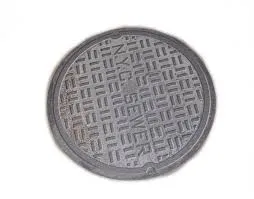Exploring the Significance of Historical Bollards in Urban Design and Heritage Preservation
Historic Bollards Guardians of Urban Spaces
Bollards, those sturdy posts strategically placed along sidewalks, streets, and harbors, serve more than just functional purposes in our urban landscapes. A fascinating element of urban architecture, they often carry rich histories and significance that reflects the evolution of city life. This article delves into the historical significance of bollards, their designs, and their eventual transformation from mere barriers to iconic city elements.
Historically, the concept of bollards traces back to their use in maritime settings. The word bollard is believed to be derived from the Old French term bolard, which refers to a post or a pillar. In the 18th century, these posts were mainly utilized at docks and harbors, serving as mooring points for ships. Crafted primarily from wood and later from metal, these robust structures allowed vessels to secure their lines safely, ensuring that boats remained stationary even amidst tumultuous waters. The maritime roots of bollards highlight their practical application, establishing their relevance as crucial components in managing the flow of both water and human traffic.
Historic Bollards Guardians of Urban Spaces
Traditional bollard designs typically included ornate details, reflecting the artistic sensibilities of the period. Cast iron bollards adorned with decorative motifs served as both functional tools and artistic expressions. These features helped convey a sense of place, inviting pedestrians to engage with their environment in a tactile and visual way. Historic bollards in cities like London and Paris exemplify this blend of artistry and utility, often becoming landmarks in their own right.
historic bollards

In the 20th century, as urban design evolved, so did the purpose and form of bollards. The rise of the automobile necessitated new forms of traffic management and pedestrian protection. The emergence of modern sequential designs saw the introduction of concrete and steel variants, offering greater durability and impact resistance. City planners began to use bollards as strategic defense mechanisms against potential traffic dangers, especially following several incidents of vehicular assaults in urban settings. This evolution marked a shift in perception, framing bollards not only as passive barriers but active protectors of public spaces.
Contemporary bollards continue to function as guardians of urban environments while also playing a role in the aesthetics of cities. Their design now encompasses a plethora of styles, colors, and materials, allowing for greater integration into the overall cityscape. From functional upright posts to elegantly designed soft barriers that blend seamlessly with outdoor seating or landscaping, the modern bollards encapsulate a balance between utility and design.
Moreover, as we witness the rise of smart cities, bollards have begun to integrate technology, further enhancing their role. Smart bollards equipped with sensors and lights can communicate real-time data regarding traffic patterns and safety conditions. They serve as informants to both pedestrians and drivers alike, potentially reducing accidents and promoting a more user-friendly environment.
In summary, historic bollards are not merely functional installations; they are reflections of a city’s heritage, illustrating the complexity of urban development over centuries. From their maritime origins to modern multifunctional designs, they embody the evolution of public space management and urban aesthetics. As cities continue to develop, understanding the historical significance of these structures can help us appreciate their role in shaping our environments. Preserving and valuing historic bollards can contribute to maintaining the identity and narrative of our urban spaces, reminding us of their crucial role in the fabric of city life.
-
The Smarter Choice for Pedestrian AreasNewsJun.30,2025
-
The Gold Standard in Round Drain CoversNewsJun.30,2025
-
The Gold Standard in Manhole Cover SystemsNewsJun.30,2025
-
Superior Drainage Solutions with Premium Gully GratesNewsJun.30,2025
-
Superior Drainage Solutions for Global InfrastructureNewsJun.30,2025
-
Square Manhole Solutions for Modern InfrastructureNewsJun.30,2025
-
Premium Manhole Covers for Modern InfrastructureNewsJun.30,2025
